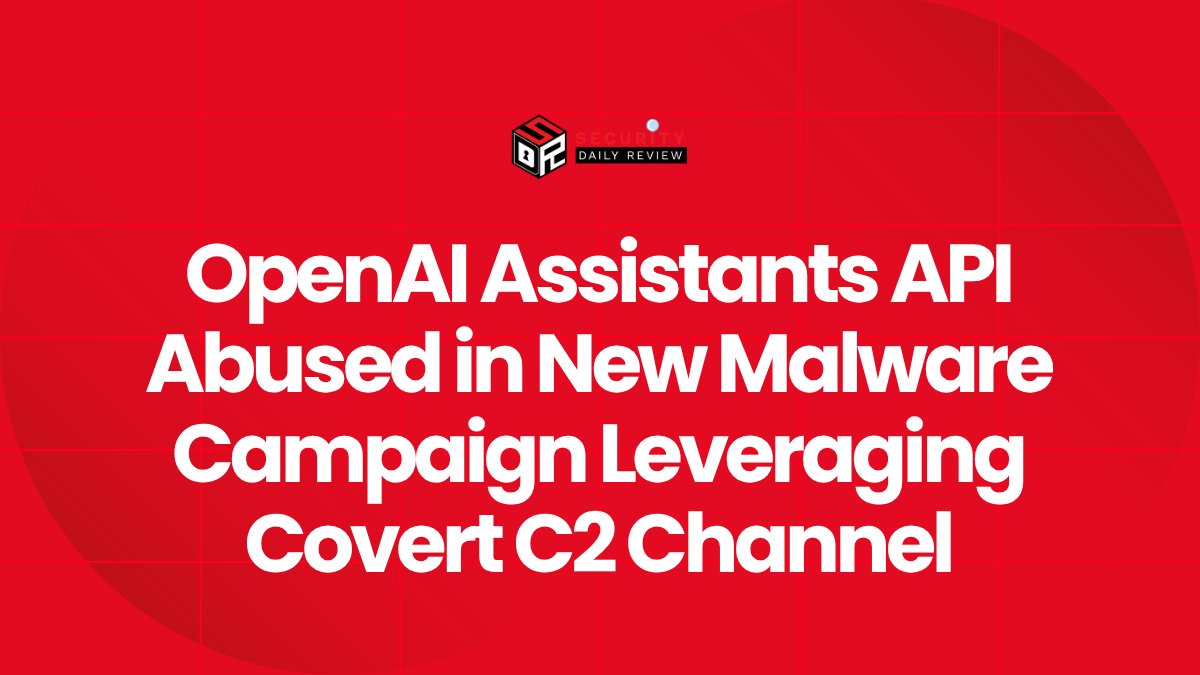A new strain of backdoor malware abusing a legitimate cloud-based generative AI service has emerged, signaling an alarming intersection of artificial intelligence (AI) tools and advanced cyber threats. Microsoft security researchers recently disclosed the discovery of this malware, which leverages the OpenAI Assistants API as a covert command-and-control (C2) channel. This development marks one of the first known exploitations of OpenAI’s production-grade API infrastructure in a malicious capacity.
Attackers Use Legitimate AI Service for Malicious Malware Communications
The Abuse of Trusted AI APIs Raises Security Concerns
According to Microsoft’s threat intelligence team, the backdoor malware was observed using the OpenAI Assistants API—a service generally used to build complex conversational agents—as a novel mechanism to receive instructions from its operators. The attackers created a malicious assistant instance under their control, then queried it through code embedded in the malware to fetch commands or task instructions, effectively bypassing traditional network monitoring tools.
Unlike previous abuses of ChatGPT or other large language models (LLMs) which primarily focused on generating phishing emails or facilitating text-based social engineering attacks, this instance represents a shift toward active operational command. The OpenAI Assistants API was not merely leveraged for creative content generation but manipulated directly to serve as a functional command-and-control node for malware operations.
Zero-Day Techniques for C2 Obfuscation
The malware writers integrated a new obfuscation technique by transmitting encoded queries to the Assistants API endpoint, where the responses—formatted as JSON payloads—contained the next instructions for malware execution.
Security researchers noted several advantages this approach offers to attackers:
- Stealth and legitimacy : Using OpenAI’s infrastructure allows adversaries to blend malicious traffic with legitimate HTTPS traffic from trusted cloud services.
- Evasion of security tools : Traditional endpoint detection and response (EDR) platforms and network-based intrusion detection systems (IDS) are less likely to flag traffic pointed to APIs from reputable providers.
- Flexible payload delivery : The malicious assistant’s logic can be updated server-side without requiring malware binaries to change, decoupling the malware from its operational logic.
This level of abstraction allows rapid iteration and re-tasking while complicating forensic attribution and incident response efforts.
OpenAI’s Response Indicates Early Detection and Mitigation
Coordination With Microsoft Helped Neutralize Active Abuse
Upon being notified by Microsoft’s research team, OpenAI collaborated to dismantle the assistant instance involved in the campaign and began implementing additional safeguards to prevent similar attempts in the future. The specific attacker group behind the campaign has not yet been publicly attributed, and Microsoft has not disclosed details regarding the deployment method of the malware or its broader impact scope.
OpenAI stated that its APIs are regularly monitored for abuse cases and that abuse prevention measures are actively enforced. Given the powerful nature of generative AI tools and the growing reliance on these platforms across enterprise and productivity ecosystems, vendors are under pressure to ensure that APIs cannot be reverse-engineered or hijacked to operate maliciously.
“We are seeing an evolution from using AI for content generation to embedding AI platforms as functional components of malware infrastructures,” said Microsoft in its advisory.
AI Weaponization Becomes an Emerging Threat Vector
The Growing Overlap Between AI APIs and Cyber Threat Infrastructure
The abuse of the OpenAI Assistants API highlights a broader trend wherein adversaries co-opt legitimate Software-as-a-Service (SaaS) and cloud-based platforms for malicious gain. This echoes past campaigns where actors abused cloud storage services or messaging APIs for exfiltration or remote command issuance.
The novel use of a conversational AI API for backend C2 communication further widens the attack surface. It suggests that defenders must now analyze traffic to AI and generative services with the same suspicion once reserved for suspicious domains or unknown servers.
Security teams should consider:
- Incorporating telemetry related to generative AI API usage into Security Information and Event Management (SIEM) tooling.
- Developing anomaly detection models specific to language model traffic patterns.
- Monitoring for known API abuse patterns, such as repeated queries from the same IP or responses with structured execution tokens.
Implications for Defenders and AI Providers
Need for Zero-Trust AI API Integration and Enhanced Monitoring
The use of the OpenAI Assistants API as a covert command-and-control channel demands a strategic pivot in how cybersecurity professionals approach AI platform integrations. As OpenAI and similar providers offer more advanced and programmable interfaces, defenders must adopt a zero-trust posture toward AI communications and build new detection heuristics that consider both the frequency and intent of API interactions.
Moreover, AI service providers must commit to implementing real-time anomaly detection on their backend to flag when assistants exhibit persistence behavior atypical of benign use cases—such as receiving repeated encrypted queries or issuing commands in executable zip payloads.
The Microsoft discovery serves as both a case study and a forewarning: as generative AI continues to expand in enterprise environments, its APIs will not remain just tools for productivity—they will become assets in the crosshairs of sophisticated cyber operations.









